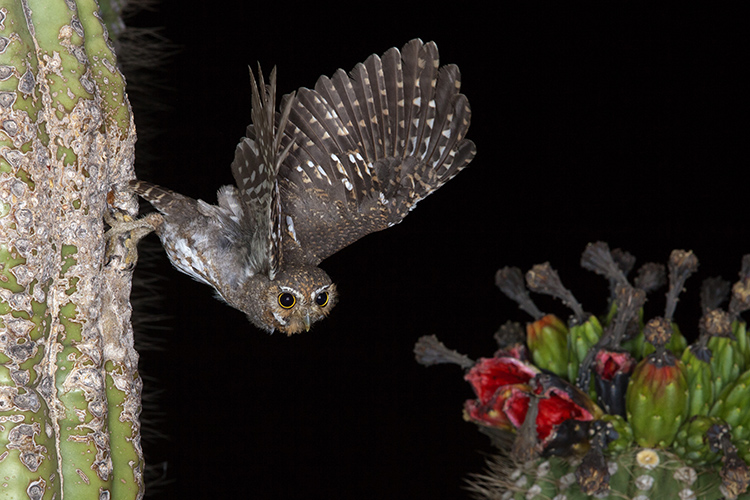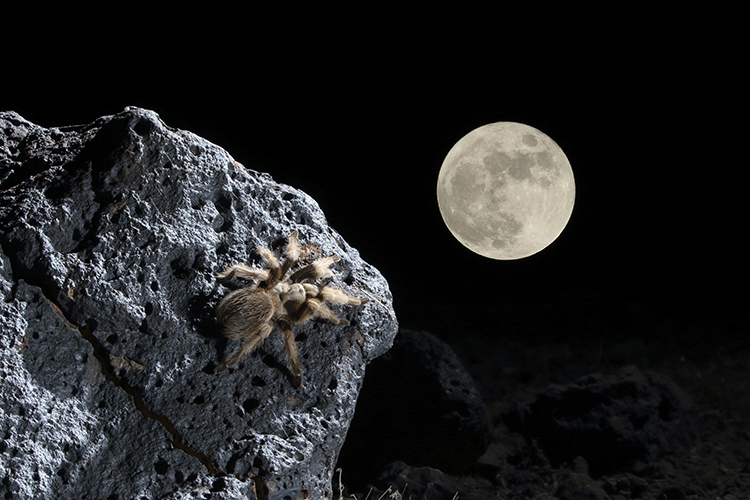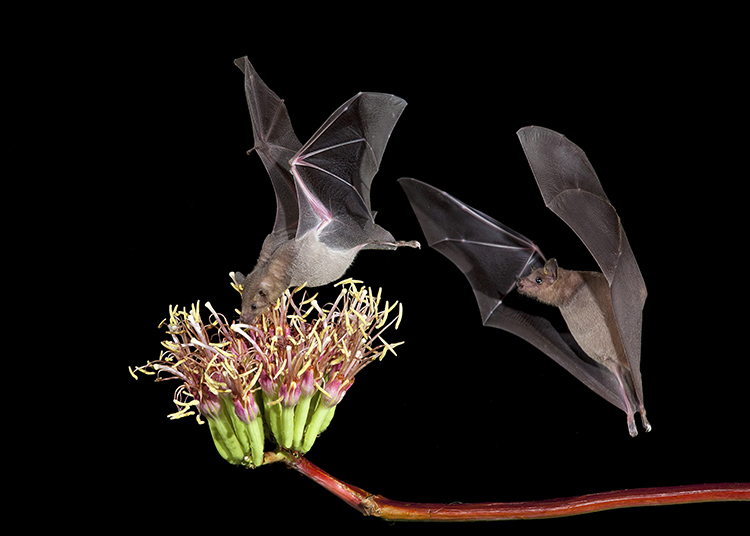Writer Joseph J. Airdo
Photography by Bruce Taubert
[dropcap]W[/dropcap]ildlife photographer Bruce Taubert knows better than most people that stumbling around in the desert is not easy at night.
“There are things that stick you and things that bite you out there,” Taubert says. “The coyotes are howling, the owls are hooting and the rattlesnakes are buzzing. You have to get over that fear of being out there in the dark by yourself.
“Most photographers are not as comfortable doing that as they are going out at sunset and taking a nice picture of the ocean.”
Taubert braves the night—and all of the eerie sights and sounds that accompany it— to capture remarkable photographs of creatures of which many people are absolutely terrified. Bats, owls, spiders, toads, rats and ravens have all become synonymous with Halloween due to their creepy appearance.
But “creepy” is a subjective construct.
“They are no more creepy than a lot of people that I see downtown or in local bars and things like that,” Taubert says with a laugh. “And they are certainly no more dangerous. They are creepy only in the sense that people do not understand them very well and that they are different. People have a natural fear of things like that.”
Nonetheless, the fear that people experience is justified. Many of the creatures that people are commonly afraid of can hurt you and any wild animal will bite you in order to defend itself. For this reason, if you do notice any unwanted visitors in your home, it is important that you visit a site like https://www.pestcontrolexperts.com/local/florida/ and get an expert to carry out an extermination process as soon as possible. Taubert wants people to understand that these creatures—especially the scary ones—do an awful lot of good things for the ecosystem. That is why he has spent the last 25 years photographing them.
“Most of my stimulation for photographing creepy crawlies is to help people see them,” Taubert explains. “You cannot value what you cannot see. People did not really start to value whales and dolphins until they started seeing photographs of them. I am hoping that they can maybe value these creatures a little bit more if I show them images of them.”
Images Arizona magazine hopes to facilitate Taubert’s admirable mission by sharing his photography of creatures that usually send shivers down our spine. We implore you to resist the natural urge to look away and behold the many unique physical characteristics that make these creatures of the night so immensely fascinating.
About the Photographer
Bruce Taubert grew up hunting and fishing in Madison, Wis. His mother was a wedding photographer who repeatedly tried to entice him to try his hand at photography. However, he was far more interested in studying wildlife.
In college, Taubert became involved with a project looking at an endangered fish in the Connecticut River. He fine-tuned his career goals and obtained a Ph.D. in wildlife management.
“At first, I was more interested in wildlife biology,” Taubert says. “But then I started to realize that, if you have good information, you can do better things with animals than if you have bad information or no information at all. So I became interested in wildlife conservation.”
Taubert’s career eventually brought him to Arizona, where he spent about 27 years with the Arizona Game and Fish Department. He worked his way up the ranks to become assistant director and began photographing wildlife to help the organization’s research biologists obtain higher-quality images.
His interest in photography did not truly take off until about 25 years ago when he became aware of ecologist, conservationist and wildlife photographer Merlin Tuttle, who founded a non-profit organization for bat conservation.
“He is a wonderful photographer,” Taubert says. “His photos do more to help people understand bats than anything that can be done on a scientific basis. I started to see the connection between public information journalism and wildlife conservation, and I realized that photographing animals may be a better way of selling how valuable they are to the public.”
Though he retired from the Arizona Game and Fish Department several years ago, he maintains his career in wildlife photography.
Taubert has traveled and photographed animals around the world and has conducted workshops in several states in the U.S. and in Africa, Ecuador, Costa Rica and Canada. His work is prominently displayed in a number of magazines, including Arizona Highways, Science, Arizona Wildlife Views and Conservation International.
Taubert’s bat photography can be found in several different books, scientific publications and magazines, as well as on a poster titled “Bats of Arizona.” In his book “Wild in Arizona: Photographing Arizona’s Wildlife,” Taubert shares his experience and insight on the best places and the best times to photograph animals in Arizona.









Comments by Admin